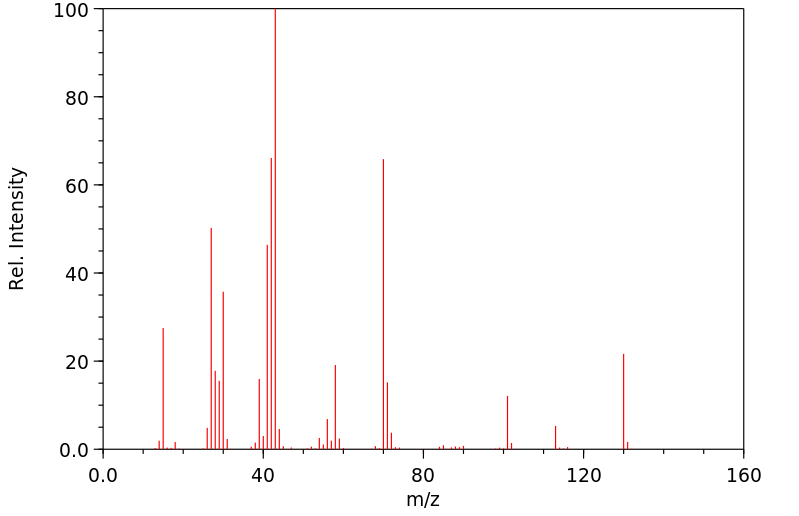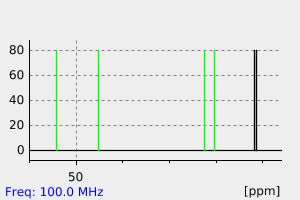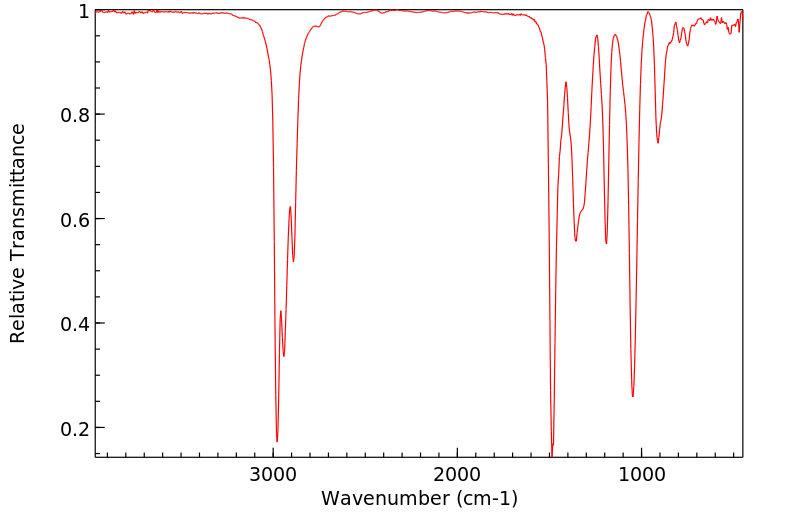代谢
人类肝脏细胞色素P450代谢环境致癌物N-亚硝基二正丙胺(NDPA)的能力被研究。在七个肝脏微粒体样本中,NDPA去丙基化反应的最大速率为1.15 nmol/min/mg(范围0.53-2.60)。P450 3A4/5抑制剂脱洛酶素在三个样本中适度地抑制了去丙基化反应(10-60%)。强效的2E1抑制剂二乙基二硫代氨基甲酸和2E1抑制性单克隆抗体(mAb)在所有样本中抑制了该反应(23至几乎100%)。使用2C9抑制剂磺胺苯唑或针对3A4、2A6和2D6的mAb未观察到显著抑制。2C8/9/18/19 mAb在一个样本中抑制了大约25%的去丙基化反应,而另一个样本中大约25%的活性不能用抑制剂来解释。三个微粒体样本对NDPA的脱硝化反应表现出低K(m)值(51-86微M),其中两个样本还表现出高K(m)值(2.6和4.6 mM)。纯化的人P450 2B6和3A4以及人P450 2A6、2C8、2C9和2D6膜相对于它们的最大转化率具有高的K(m)值,因此它们在微摩尔浓度下不太可能参与NDPA的代谢。相反,纯化的兔2E1对去丙基化的K(m)和V(max)值分别为52微M和13.4 nmol丙醛/min/nmol P450。脱硝化的值分别为66微M和1.44 nmol亚硝酸盐/min/nmol P450。在表达2E1的转染人肝上皮细胞中,NDPA的毒性呈剂量依赖性,直至50微M。在对照组细胞或表达2A6的细胞中未观察到毒性。这些结果表明,2E1是主要负责在低微摩尔浓度下代谢NDPA的人肝脏微粒体同种型。我们还展示了纯化的P450催化NDPA脱硝化的速率大约为去丙基化速率的10-20%,并且每个同种型的两个反应的K(m)值相同。这与形成两种途径共有的初始中间体相一致,可能是α-亚硝胺自由基。
The ability of human liver cytochrome P450s to metabolize the environmental carcinogen N-nitrosodi-n-propylamine (NDPA) was investigated. The maximum rate of NDPA depropylation in seven human liver microsomal samples was 1.15 nmol/min/mg (range 0.53-2.60). Troleandomycin, a P450 3A4/5 inhibitor, inhibited depropylation modestly (10-60%) in three of seven samples. Diethyldithiocarbamic acid, a potent 2E1 inhibitor, and a 2E1 inhibitory monoclonal antibody (mAb) inhibited the reaction in all samples (23 to almost 100%). No significant inhibition was observed with the 2C9 inhibitor sulfaphenazole or with mAbs to 3A4, 2A6 and 2D6. The 2C8/9/18/19 mAb inhibited depropylation in one sample by approximately 25% and approximately 25% of the activity in another sample could not be accounted for by the inhibitors. Denitrosation of NDPA by three of the microsomal samples exhibited low K(m) values (51-86 microM) while two of these also had high K(m) values (2.6 and 4.6 mM). Purified human P450 2B6 and 3A4 and human P450 2A6, 2C8, 2C9 and 2D6 membranes had high K(m) values relative to their maximum turnover rates and are unlikely to participate in NDPA metabolism at micromolar concentrations. Conversely, purified rabbit 2E1 exhibited K(m) and V(max) values for depropylation of 52 microM and 13.4 nmol propionaldehyde/min/nmol P450, respectively. Values for denitrosation were 66 microM and 1.44 nmol nitrite/min/nmol P450, respectively. The toxicity of NDPA in transfected human liver epithelial cells expressing 2E1 was dose dependent down to 50 microM. No toxicity was observed in control cells or those expressing 2A6. These results indicate that 2E1 is the major human liver microsomal isoform responsible for NDPA metabolism at low micromolar concentrations. We also show that purified P450s catalyze the denitrosation of NDPA at approximately 10-20% of the rate of depropylation and K(m) values for both reactions are the same for each isozyme. This is consistent with the formation of an initial intermediate common to both pathways, presumably an alpha-nitrosamino radical.
来源:Hazardous Substances Data Bank (HSDB)









